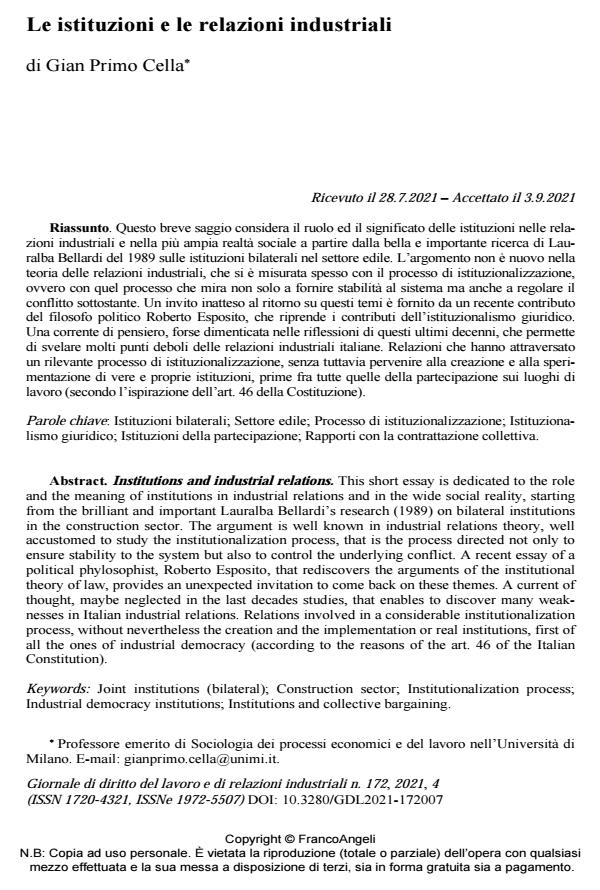Institutions and industrial relations
Journal title GIORNALE DI DIRITTO DEL LAVORO E DI RELAZIONI INDUSTRIALI
Author/s Gian Primo Cella
Publishing Year 2022 Issue 2021/172
Language Italian Pages 15 P. 595-609 File size 219 KB
DOI 10.3280/GDL2021-172007
DOI is like a bar code for intellectual property: to have more infomation
click here
Below, you can see the article first page
If you want to buy this article in PDF format, you can do it, following the instructions to buy download credits

FrancoAngeli is member of Publishers International Linking Association, Inc (PILA), a not-for-profit association which run the CrossRef service enabling links to and from online scholarly content.
This short essay is dedicated to the role and the meaning of institutions in industrial relations and in the wide social reality, starting from the brilliant and important Lauralba Bellardi’s re-search (1989) on bilateral institutions in the construction sector. The argument is well known in industrial relations theory, well accustomed to study the institutionalization process, that is the process directed not only to ensure stability to the system but also to control the underlying conflict. A recent essay of a political phylosophist, Roberto Esposito, that rediscovers the ar-guments of the institutional theory of law, provides an unexpected invitation to come back on these themes. A current of thought, maybe neglected in the last decades studies, that enables to discover many weaknesses in Italian industrial relations. Relations involved in a considerable institutionalization process, without nevertheless the creation and the implementation or real institutions, first of all the ones of industrial democracy (according to the reasons of the art. 46 of the Italian Constitution).
Keywords: Joint institutions (bilateral); Construction sector; Institutionalization process; In-dustrial democracy institutions; Institutions and collective bargaining.
- Rileggendo un "classico moderno": Cultura e istituti partecipativi delle relazioni industriali in Europa di Marco Biagi Lorenzo Zoppoli, in GIORNALE DI DIRITTO DEL LAVORO E DI RELAZIONI INDUSTRIALI 176/2023 pp.573
DOI: 10.3280/GDL2022-176004 - Problemi e prospettive nello studio della contrattazione collettiva aziendale Michele Tiraboschi, in ECONOMIA E SOCIETÀ REGIONALE 3/2022 pp.21
DOI: 10.3280/ES2022-003003
Gian Primo Cella, Le istituzioni e le relazioni industriali in "GIORNALE DI DIRITTO DEL LAVORO E DI RELAZIONI INDUSTRIALI " 172/2021, pp 595-609, DOI: 10.3280/GDL2021-172007